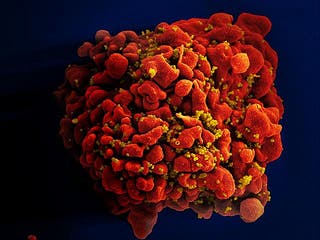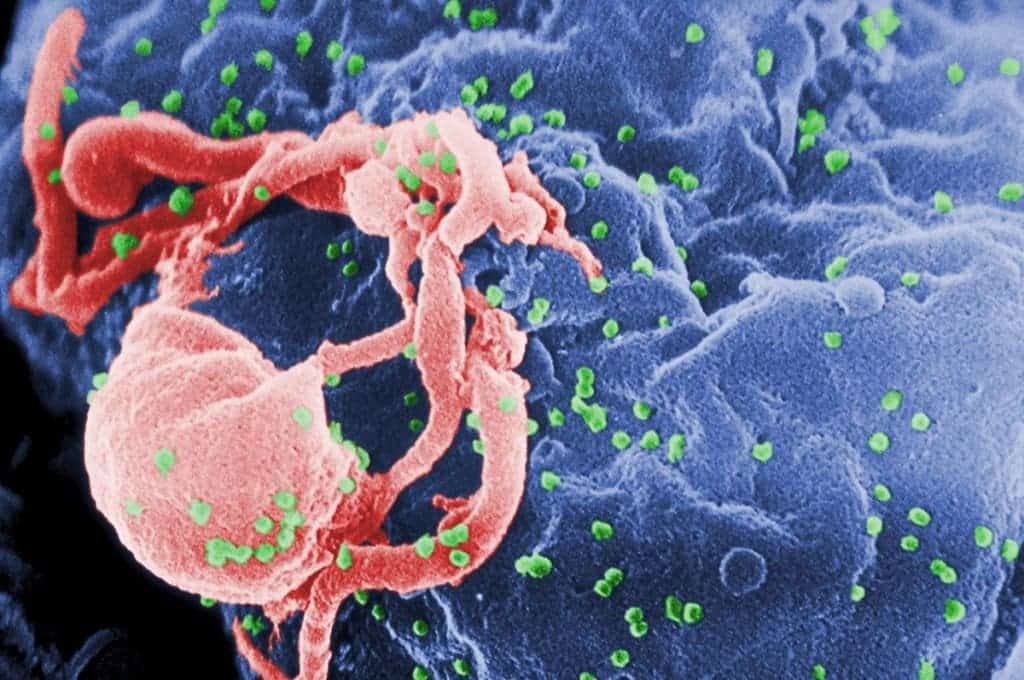French scientists described the mechanism through which two HIV-infected individuals have become “spontaneously cured” of the virus, explaining that this can lead to new, novel treatments in the fight against AIDS. The “apparent spontaneous cure” has opened up previously closed doors for drug engineers, they note.

“The work opens up therapeutic avenues for a cure, using or stimulating this enzyme,” they said in a statement.
According to their study, both men were infected with HIV but neither developed AIDS, because the virus’ genetic code was altered. In both cases, the virus was still present, but it was unable to replicate because of these mutations. The two men (aged 57 and 23 respectively) are not alone in this; researchers explain that a small number of people (less than 1%) scientifically identified as “elite controllers” are naturally able to keep the virus at clinically undetectable levels.
It’s still not clear why this happens, although they have a pretty solid theory. The change appeared to be linked to increased activity of a common enzyme named APOBEC. APOBEC is a family of evolutionarily conserved proteins with various functions. The team suggests that this spontaneous evolution arose as a result of a process called “endogenisation” that is believed to have neutralised other viruses in humans in the past. The same process, though at a much larger scale, was observed in Koala populations. Koala populations can get the HIV virus, but they develop a natural resistance to it, genetically modify the virus, and then pass on these resistance genes to their offspring, thus protecting the species from developing AIDS.
“We propose that HIV cure may occur through HIV endogenisation in humans,” the team wrote. “These findings suggest that without therapeutic and prophylactic strategies, after several decades of HIV/host integrations and millions of deaths, it is likely that a few individuals might have endogenised and neutralised the virus and transmitted it to their progeny,” they added. “We believe that the persistence of HIV DNA can lead to cure, and protection, from HIV.”
These are very strong claims, and not everybody is convinced of their validity.
“If it came across my desk for review, it would get short shrift, to be honest,” University of Nottingham molecular virology professor Jonathan Ball told AFP, insisting the team had provided “no evidence” of a functional cure.

Ball says that endogenisation, the process they propose, can only be demonstrated when the when the resistance is passed to offspring through eggs or gametes.
“I am not aware at all of them showing the presence of the virus in any gamete,” he said, referring to reproductive cells.
As for the other claims, some praised them, while some remained skeptical. The idea that instead of eradicating the virus, we should focus on neutralizing it. Sharon Lewin, director of the Doherty Institute for Infection and Immunity in Melbourne, Australia, said the suggested shift in strategy “has some merit.”
“But, and it is a big but, the trick will be to work out which protein is key in ‘crippling’ the virus,” cautioned Lewin.
For the moment, while several approaches have shown some success in limiting the effects of disease, no clear cure for AIDS is in sight. The best thing to do is still prevention.
Journal Reference: Philippe Colson, Isabelle Ravaux, Catherine Tamalet, Olga Glazunova, Emeline Baptiste, Eric Chabriere, Aurélie Wiedemann, Christine Lacabaratz, Mohamed Chefrour, Christophe Picard, Andreas Stein, Yves Levy and Didier Raoult. HIV infection en route o endogenization: two cases. DOI: 10.1111/1469-0691.12807
Was this helpful?



